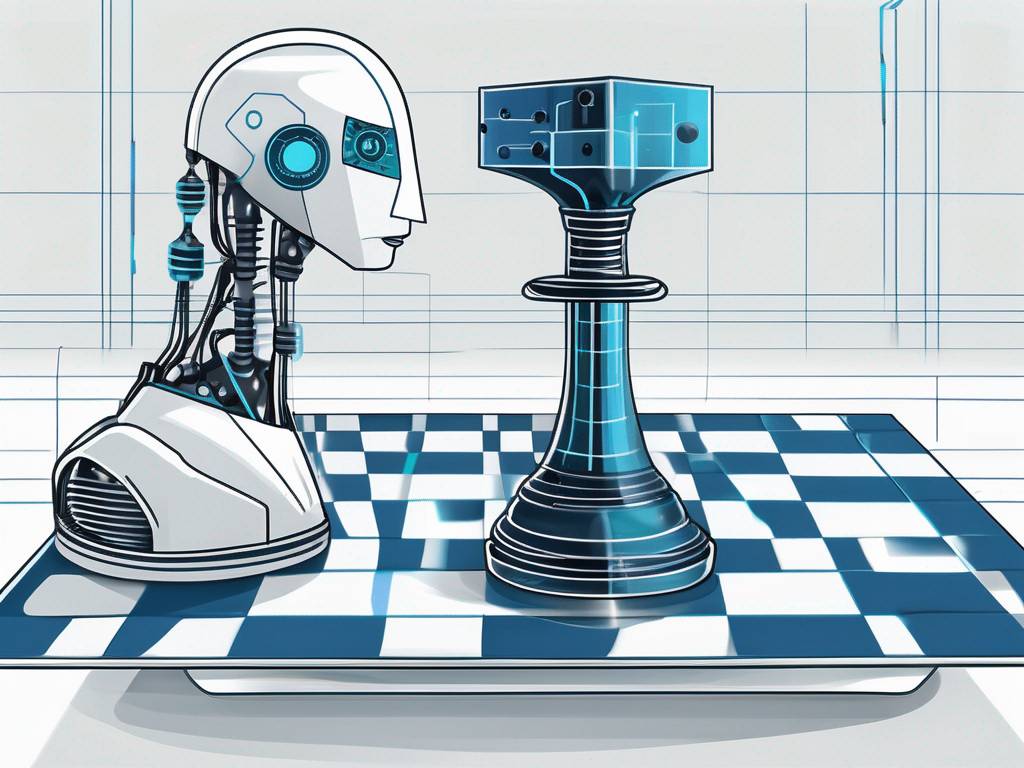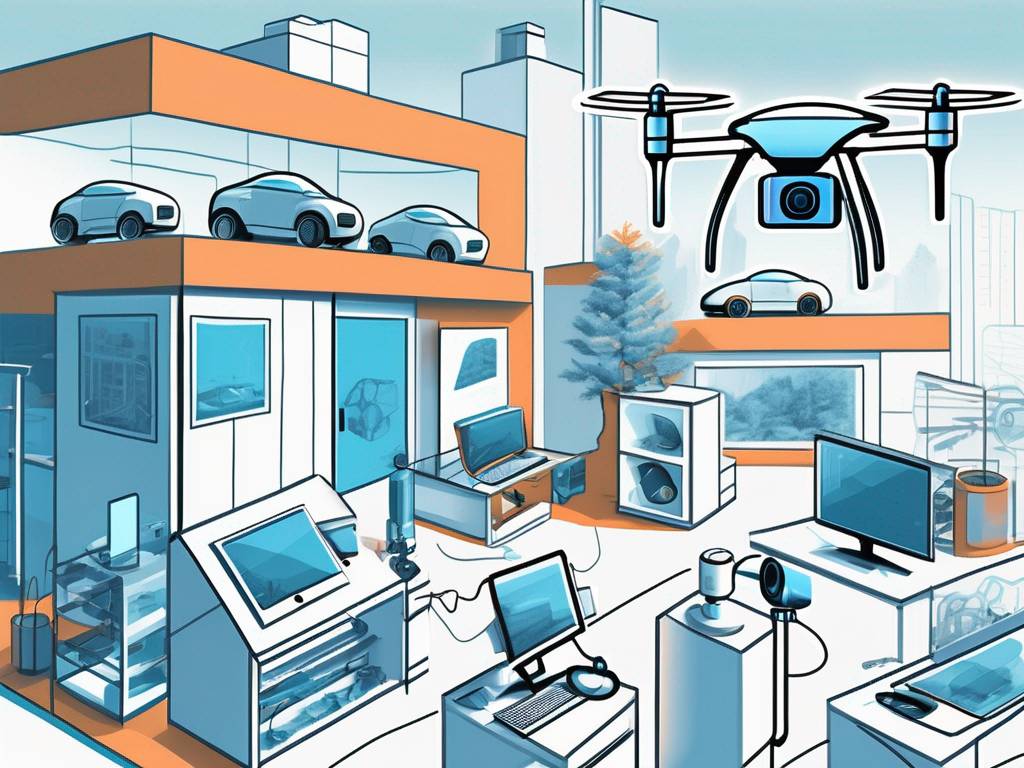What Is Object Recognition: A Comprehensive Guide
Key Insights
- Object recognition is a technology that allows machines to identify and classify objects from digital images or videos
- It plays a significant role in robotics, security systems, and healthcare, enhancing automation and efficiency
- Techniques such as template matching, feature-based approaches, and appearance-based approaches are utilized in object recognition
- Occlusion, clutter, scale, and rotation are challenges that need to be addressed for robust object recognition
Object recognition is a fundamental ability of human perception that allows us to identify and understand the world around us. In recent years, with advancements in technology, object recognition has gained significant attention and become an essential component in many fields, including robotics, security systems, and healthcare.
Understanding the Basics of Object Recognition
Definition & Importance of Object Recognition
Object recognition refers to the process of identifying and classifying objects or patterns within digital images or videos. It enables machines to interpret visual data and make informed decisions based on the recognized objects. This technology has revolutionized various industries by providing solutions that were once limited to human capabilities.
With object recognition, machines can now perform tasks that were previously only possible for humans. For example, in the field of autonomous vehicles, object recognition allows cars to detect and identify pedestrians, traffic signs, and other vehicles, enabling them to navigate safely and avoid accidents. In the retail industry, object recognition enables automated checkout systems to identify and categorize products, streamlining the shopping experience.
The importance of object recognition lies in its ability to enhance automation, efficiency, and accuracy in tasks that require visual understanding. By enabling machines to recognize objects, they can perform complex actions, such as sorting and organizing items, detecting anomalies, and even assisting in medical diagnoses.
The Science Behind Object Recognition
Object recognition is rooted in several scientific disciplines, including computer vision, machine learning, and artificial intelligence. Computer vision algorithms analyze image data and extract features that are essential for object identification. These algorithms can detect edges, corners, textures, and other visual cues that help in distinguishing objects from their surroundings.
Machine learning models then learn to recognize these features and classify objects based on previously labeled data. The models are trained on large datasets containing images with known object labels. During the training process, the object recognition models learn to associate specific features with certain objects, allowing them to make accurate predictions on unseen data.
Deep learning techniques, such as convolutional neural networks, have provided breakthroughs in achieving remarkable accuracy in object recognition tasks. These networks are designed to mimic the human brain’s ability to process visual information, allowing them to learn complex patterns and make accurate predictions.
As technology continues to advance, object recognition is expected to become even more sophisticated. Researchers are exploring new approaches, such as combining object recognition with other technologies like natural language processing and augmented reality, to create more immersive and intelligent systems.
Object Recognition vs. Object Detection
While object detection and object recognition share the overarching goal of identifying objects, their methodologies differ in execution. Object detection is the specific process of pinpointing instances of objects within images. In the realm of deep learning, object detection serves as a subset of object recognition. Here, the emphasis extends beyond mere identification; it involves not only recognizing the object but also precisely locating it within an image. This nuanced approach enables the identification and localization of multiple objects within the same image, contributing to a more comprehensive visual understanding.
The Role of Object Recognition in Different Fields
Object recognition is a powerful technology that has found applications in various fields, revolutionizing the way tasks are performed and improving efficiency. Let’s explore how object recognition is utilized in different industries.
Object Recognition in Robotics
In the field of robotics, object recognition plays a vital role in enabling robots to interact and navigate their surroundings. Robots equipped with object recognition capabilities can detect and locate objects, facilitating tasks such as picking up and placing items.
For example, in manufacturing plants, robots with object recognition capabilities can identify and handle different components, ensuring accurate assembly and reducing errors. This not only improves productivity but also enhances the overall quality of the final product.
In the healthcare sector, robots equipped with object recognition can assist surgeons during complex procedures. By accurately identifying organs and tissues, robots can provide real-time feedback and guidance, helping surgeons perform precise and minimally invasive surgeries.
Object Recognition in Security Systems
Object recognition has significantly revolutionized security systems, contributing to improved surveillance and threat detection. It enables cameras and sensors to detect suspicious objects or activities, such as unauthorized access or prohibited items in public places. By accurately identifying objects, security systems can trigger appropriate responses and prevent potential threats.
For instance, in airports, object recognition technology can identify prohibited items, such as weapons or explosives, in luggage or on individuals. This helps security personnel take immediate action and ensure the safety of passengers and staff.
Object recognition can also be used to track and analyze human behavior, identifying suspicious activities or patterns. This can be particularly useful in crowded places, where manual monitoring may be challenging.
Object Recognition in Healthcare
The healthcare industry has also embraced object recognition to enhance patient care and medical diagnostics. Particularly in medical imaging analysis, object recognition algorithms are adept at detecting anomalies such as tumors, fractures, or disease markers in X-rays, MRI scans, CT scans, and other imaging modalities. By identifying subtle patterns that might be overlooked by the human eye, these systems provide invaluable support in diagnosing conditions like pneumonia or cancer.
By providing real-time image analysis, object recognition assists surgeons in identifying critical structures, ensuring surgical accuracy, and minimizing risks. This technology not only improves patient outcomes by supporting personalized treatment plans, but also streamlines hospital operations by enhancing the management of medical records and equipment. As object recognition technology continues to evolve, its integration into healthcare promises to further refine medical care, making it more efficient, personalized, and accessible to patients worldwide.
Object Recognition Techniques
Template Matching
Template matching is a common technique used in object recognition, where a predefined template is compared with different regions of an image to identify matches. It is effective when the appearance of the object is consistent and the image contains minimal variations.
Feature-based Approaches
Feature-based approaches involve identifying distinctive features of an object, such as edges, corners, or textures, and matching them with corresponding features in the image. This technique is widely used in applications where objects may vary in appearance or are subject to different lighting conditions.
Appearance-based Approaches
Appearance-based approaches focus on learning the appearance and variations of objects through extensive training using large datasets. These approaches utilize machine learning models to classify objects based on their visual appearance, allowing for robust recognition in various real-world scenarios.
Challenges & Limitations of Object Recognition
Issues With Scale & Rotation
Object recognition algorithms often struggle to accurately identify objects that vary in scale or rotation. The ability to recognize objects regardless of their size or orientation is crucial for real-world applications, and overcoming this challenge remains an active area of research.
Dealing With Occlusion & Clutter
Occlusion and clutter pose significant challenges in object recognition, as objects may be partially hidden or surrounded by unrelated visual elements. Developing algorithms that can effectively identify objects in complex and cluttered scenes is another critical research endeavor.
The Future of Object Recognition
Impact of Artificial Intelligence & Machine Learning
The advancements in artificial intelligence and machine learning have revolutionized object recognition, propelling it to new heights. As these technologies continue to evolve, we can expect object recognition to become even more accurate, efficient, and adaptable to various scenarios.
Potential Developments & Innovations
In the future, we can anticipate exciting developments in object recognition. For instance, the integration of object recognition with augmented reality and virtual reality technologies could transform industries like retail and education, enabling immersive experiences and personalized interactions.
Object recognition has emerged as a transformative technology with implications across various industries. Its ability to interpret visual data and recognize objects brings automation, efficiency, and accuracy to numerous tasks. For C-level executives, object recognition presents opportunities to streamline operations, enhance security measures, and improve customer experiences. As the field continues to advance, it is crucial for industry leaders to stay updated on the latest developments and leverage this technology to gain a competitive edge.
Questions?
- What is object recognition, and how does it differ from image recognition?Toggle questionObject recognition involves identifying and classifying specific objects within an image or a video. While image recognition broadly understands the contents of an entire image, object recognition specifically focuses on recognizing and categorizing individual objects within that image.
- What are the key components of object recognition technology?Toggle questionObject recognition relies on advanced computer vision algorithms, machine learning models, and neural networks. These components work together to analyze visual data, detect objects, and assign relevant labels to them.
- How does object recognition contribute to artificial intelligence and everyday applications?Toggle questionObject recognition is a fundamental aspect of artificial intelligence, enabling machines to understand and interpret visual information. In everyday applications, it powers technologies like facial recognition, autonomous vehicles, and augmented reality, enhancing user experiences and automating various tasks.
- What challenges does object recognition face?Toggle questionObject recognition can face challenges in complex environments with factors like varying lighting conditions, occlusions, and diverse object orientations. Overcoming these challenges requires robust algorithms and continuous advancements in computer vision technology.
- How is deep learning applied in object recognition?Toggle questionDeep learning plays a significant role in object recognition by enabling the training of sophisticated neural networks. Convolutional Neural Networks (CNNs) are commonly used in object recognition tasks, learning hierarchical features to identify and classify objects.
- What is image classification?Toggle questionImage classification is a process used in computer vision that categorizes images into one or more classes or categories. This can range from distinguishing cats from dogs in photos to identifying objects within satellite images. It is a fundamental task in the field of machine learning and artificial intelligence, where it serves as a stepping stone toward more complex processes like object detection and image segmentation.

 hello@westlink.com
hello@westlink.com  (866) 954-6533
(866) 954-6533  700 N Colorado Blvd,
700 N Colorado Blvd,







Comments